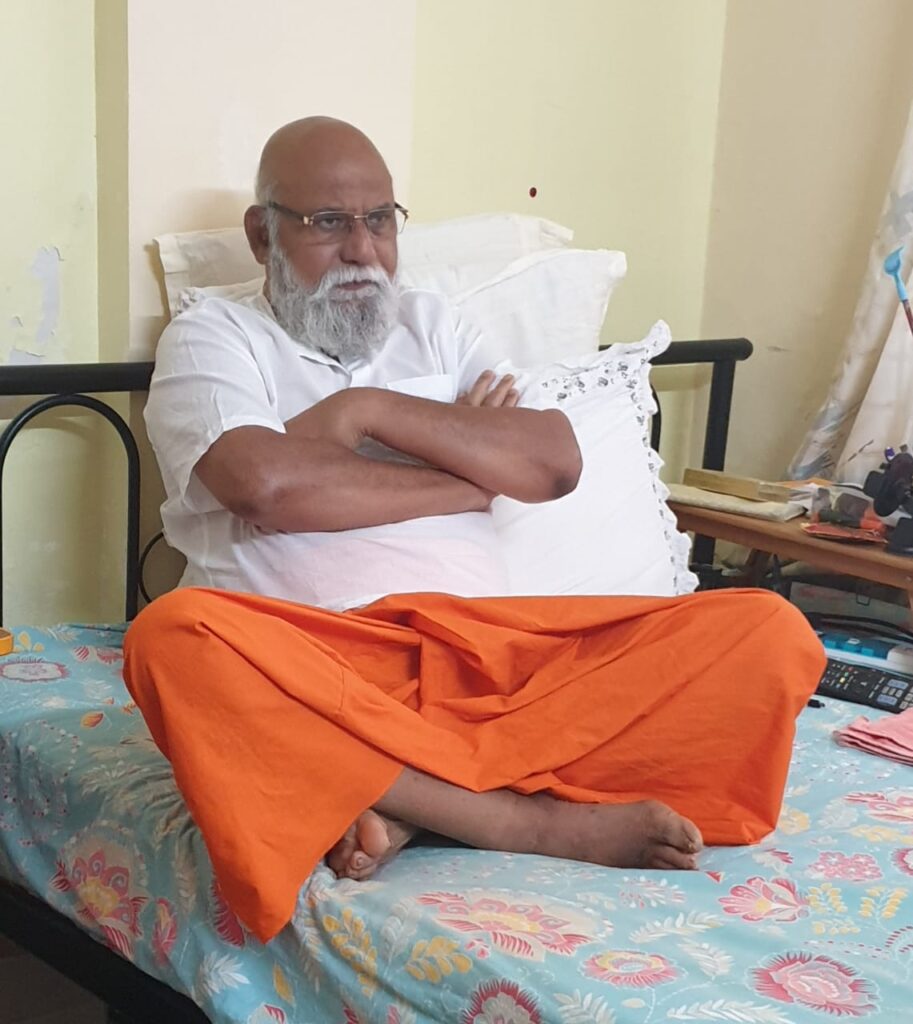
Pranam to Parampoojya Parameshwar Sadguru Swami Anilji Maharaj
Paramamrut
Mangalacharan (9)
Tu swanand sadodit l Asipadi tadatma alipta I Padatit swyambharit l Kaivalya tu ll17ll
Cont’d.. 2
The second pad (word) is ‘Twam’ that is You. Now whom exactly is getting addressed by You? Normal impure buddhi will take You as the person who is listening to the sentence. Impure buddhi is such a buddhi which can not grasp the knowledge beyond senses, spiritual knowledge. Even if a person is great philosopher, world recognised wise man, but not actually Realised Paramatma or Self then his buddhi still would be impure buddhi. There were so many philosophers from foreign countries who studied Bharatiy Adhyatm (Dhnyan given in Scriptures) and accrued International Recognition, but still could not experience, oneness with Paramatma, could not Realise Self. Their buddhi also is eclipsed with nescience.
Who is this You? General notion is, ‘one who is with the body having name and form’. But such is not the case. In spiritual path in Dhnyan Path; when one is putting efforts to find out who is getting addressed by, ‘Twam’ that is known as search for ‘Twam.’ When we are saying Twam; first that appears in our mind as the one having the five covers or envelopes. These covers are, Annamaya Kosh; the envelop formed by Food, Pranmaya Kosh, (Gases, breathing and other activities of body), Manomay Kosh (mind), Vidhnyanamay Kosh (buddhi), Anandmay Kosh (Joy). When all these envelopes are taken out then one can reach to real You. This process is very well explained in Swamiji’s Vedant Dhnyan Granth, “Dev Kothe Ahe” in Marathi language.
Once Body, Pran, mind, buddhi, ego, Anandmay Kosh ( Joy using body senses) are separated then what remains is Atma, Self. Tat is also Atma and after putting efforts for searching Twam by removing all the casings then Twam also means Atma. Both Tat and Twam are same – Atma.
The third pad is Asi. Means exist. Existence is only of Atma. So all three padas in this Mahavakya Tat – Twam – Asi means Atma alone.
Tat means Nameless, formless, Paramatma, beyond Gunas. Not reachable by human senses. Unmanifested, devoid of any sobriquets.
Twam : You, without any of the covers known as Panchakosh. That means again Paramatma.
Asi : is – exists. Signifies existence. There is no existence other than Paramatma.
Shruti tells, “Neh nanasti kinchan”. Which means that there can not be any existence other than Paramatma. So the existence itself means Paramatma.
Swamiji tells that all these three Pad, Tat, Twam and Asi means Only Paramatma.
In the next line Mukundraj Maharaj says that O Sadguru Paramatma, all these three padas means You and only You. In fact there is no differentiation among these three. (whatever difference is perceived that is only due to imaginary sobriquet – upadhi). You are not bound by these, You are beyond them. You only exist.
You alone are there.
